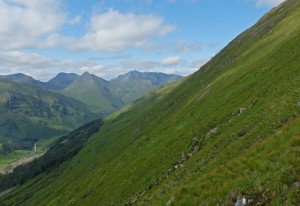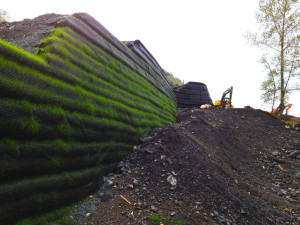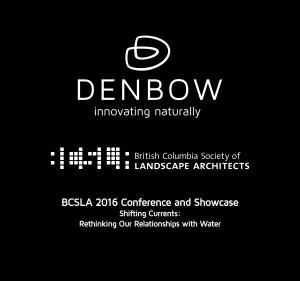VIDEO: Soil Installation into Confined Space
/0 Comments/in Blower Truck Services, Environment, Green Infrastructure, Sustainable Development /by Tanya RichardsSoil Structure for Green Roof Media
/0 Comments/in Environment, Green Infrastructure, Municipal and Infrastructure Journal, Sustainable Development, Uncategorized /by Tanya RichardsSoil Structure for Green Roof Media Green roofs or living roofs have become popular over the years. This is because they provide ecological benefits, aesthetic value and creative urban architecture. When designing a green roof, there are several factors to take into consideration. Green roof growing media is an integral part of a functioning green roof system. […]
Does LEED Certification Contribute to Sustainable Development?
/0 Comments/in Environment, Green Infrastructure, Municipal and Infrastructure Journal, Sustainable Development /by Tanya Richards5 Steps for Erosion Control on Steep Slopes and Embankments
/34 Comments/in Erosion Control, Green Infrastructure, Slope Stabilization /by Tanya RichardsFor the most part, soil will stay put. However, on steep slopes and embankments, there is the elevated risk of erosion. It is essential to put as much effort as possible into actions that will stop the soil from washing away. This is because not only could this make the area that has been eroded barren, but it could also adversely affect water supply and introduce pollutants. Additionally, it could take decades to rebuild even the initial layer of topsoil, so it essential to have some insight on how to keep topsoil in place.
There are many methods that could be used to help prevent or stop erosion on steep slopes, some of which are listed below.
Plant Grass and Shrubs
 Grass and shrubs are very effective at stopping soil erosion. This is primarily because plant roots tend to hold soil together, making it harder to erode. The leaves of the plants also help to reduce the velocity of raindrops falling on the ground, making it harder for them to dislodge the soil and erode it. Ornamental grass and low, spreading shrubs work best as they leave no areas of bare soil exposed to the elements.
Grass and shrubs are very effective at stopping soil erosion. This is primarily because plant roots tend to hold soil together, making it harder to erode. The leaves of the plants also help to reduce the velocity of raindrops falling on the ground, making it harder for them to dislodge the soil and erode it. Ornamental grass and low, spreading shrubs work best as they leave no areas of bare soil exposed to the elements.
Use Erosion Control Blankets to Add Vegetation to Slopes
There are many varieties of fiber, biodegradable, and compost blankets/mats on the market today, and they have all been designed with one aim; to minimize the effects of water erosion on slopes and embankments. Rolled mats are usually made from mulch that is held together by a fiber mesh. They degrade slowly, allowing vegetation that may have been grown in the area to grow and take over the job of protecting the soil from erosion when the mats have finally degraded completely. Compost erosion control blankets act similarly to mulch products but provide organic nutrients that promote vegetation growth, even in areas where germination, moisture management and irrigation could be challenging.
Build Terraces
 If you are planning on trying to control the erosion on very steep slopes or embankments, sometimes planting vegetation may just not cut it as the slope may be too steep to support anything other than the hardiest grass due to the rapid rate of erosion. If this is the case, you should consider building terraces to help slow down erosion as the vegetation takes hold. Terraces can be made out of anything, from wood to concrete blocks to bio-mechanical solutions like the Cascadia Green Wall that uses Filter Soxx with natural mulch/seed filling and geogrid for structural stability. The beds that are created by the terraces can then be used to plant vegetation such as ornamental plants or grass.
If you are planning on trying to control the erosion on very steep slopes or embankments, sometimes planting vegetation may just not cut it as the slope may be too steep to support anything other than the hardiest grass due to the rapid rate of erosion. If this is the case, you should consider building terraces to help slow down erosion as the vegetation takes hold. Terraces can be made out of anything, from wood to concrete blocks to bio-mechanical solutions like the Cascadia Green Wall that uses Filter Soxx with natural mulch/seed filling and geogrid for structural stability. The beds that are created by the terraces can then be used to plant vegetation such as ornamental plants or grass.
Create Diversions to Help Drainage
Depending on the incline of the slope or embankment, one of the most effective ways to help prevent erosion is to create diversions which will channel excess water down the slope along a predetermined path. One of the simplest ways to do this is to create open ditches or drains by simply digging along the slope at regular intervals. Use of pipes and gutters is also very effective, and work just as well as natural drains when designed and installed properly.
Rain Gardens at Tsawwassen Mills
/0 Comments/in Construction Landscape Journal, Environment, Green Infrastructure, Municipal and Infrastructure Journal, Stormwater Management, Sustainable Development /by Tanya RichardsMandated Green Roofs in Toronto. Is Vancouver Next?
/0 Comments/in Environment, Green Infrastructure, Sustainable Development /by Tanya RichardsGreen roofs have many benefits. They not only insulate the buildings they shelter but also improve air quality and reduce runoff, easing sewer system loads and preventing associated overflow. They cool in summer, reduce heat loss in winter, and can support birds and other wildlife. Where green roofs top public buildings, they create public green space and parkland. Living roofs can even help cool an entire city in the summer by reducing what’s known as the “urban heat island effect,” where traditional roofing and paving materials increase the overall temperature of the air.
With Toronto’s new Green Roof Mandate, it is well on its way to becoming Canada’s Emerald City. Thanks to a City of Toronto bylaw that requires green roofs on new construction, green roofs will see a dramatic rise in Toronto’s skyline. Residences, commercial and institutional buildings over 2,000 square meters must have a roof that’s 20-60 percent “living.” Green/living roofs are partly or completely covered by vegetation, planted into a growing medium and sitting over a waterproof membrane. They often include structural support, irrigation and drainage systems, and can even incorporate greywater treatment ponds.
With the living roofs, much of the rain fall will now be “absorbed” into the plants and lessen the burden on waste water treatment and storm water volumes. For the city of Toronto, this means that there will be four to five more beach days. That’s good news for everyone. The question for us in City of Vancouver BC is, are we next?
Read the article here.
Why Sustainable Development Goals Matter
/0 Comments/in Environment, Green Infrastructure, Municipal and Infrastructure Journal, Sustainable Development /by Tanya RichardsWhy Sustainable Development Goals Matter
As our neighbourhoods grow, and our needs as communities increase, development and ingenuity bring solutions to people today. The key to ensuring our solutions are long-term is found in the way we do development.
Why sustainable goals matter is simply, Sustainable Development involves a relationship between nature and humans that demonstrates respect for both. Though we may not always notice it, the natural environment provides a great deal for us, and at times needs some corrective procedures to continue providing for us in the future.
We can see how our relationship to nature is give and take. The Eco-System naturally produces rainfall, provides crops to farm, and protects humans from the elements. At times, for a variety of reasons, this system breaks down and human intervention is needed. Sustainable Development is a balancing act where both parties work together for one common goal, and without it, things begin to fall apart.
Denbow seeks to use innovation to work within this balancing act. Our team specializes in construction, agriculture, landscaping, and municipal/infrastructure, all of which use sustainable development techniques. An example of this is found in Denbow’s newer work in the areas of erosion and sediment control, using forest residuals.
One of the many products Denbow offers is manufactured soil. A mixture of minerals, liquids, organic matter and countless organisms, without healthy soil, the elements would be stripped and the land eventually destroyed. Soil holds everything together, and the right soil for the right project makes all the difference.
At Denbow, we use high quality blended soils that are produced with stringent guidelines for different kinds of use. This mixture of engineered soils can be used for a few specific purposes:
- Vegetable Garden Soil is rich in organic matter. Using this soil in your garden will help you grow the best, healthiest vegetables each season. Growing your own vegetables can give your family the vitamins and minerals our bodies need.
- Specialty Soils are proprietary blended. These are used for such projects as green roofing, structural soil for street tree growth and stormwater management. The structure of these soils are custom made and vigorously tested. Sustainable development projects often require creative measures, and specialty soils provide the perfect opportunity to meet the needs of the specific projects.
- Manufactured Soils are premium blends that contain various levels of compost and sand, designed to benefit trees and shrubs, turf health, and to rejuvenate depleted existing soil. Using these soils can restore existing greenery, or provide an important start for new growth.
Within the variety of soil produced by Denbow, we see how sustainable development starts in our own backyard. Using naturally produced materials, we can benefit from their use as we return them to the earth in our different projects, neither harming human nor the environment.
Denbow Innovations are full of products and services for sustained developments located in the Lower Mainland of British Columbia.
Phone for more information (888) 933.6269
” Delivering Satisfaction for Industrial, Government, Commercial and Residential Use”
Is Sustainable Development for Real?
/0 Comments/in Environment, Green Infrastructure, Sustainable Development /by Tanya RichardsBCSLA Showcase
/0 Comments/in Announcement, Environment, Erosion Control, Green Infrastructure, Sediment Control, Slope Stabilization, Stormwater Management, Streambank Restoration, Water Abatement /by Tanya RichardsTomorrow and Saturday we’re participating in the BC Society of Landscape Architects (BCSLA) 2016 Annual Conference and Showcase. Landscape Architects, visit us in booth #16 to check out our models of Cascadia Green Wall System and EcoBlanket.
Looking forward to meeting you and focusing on “Shifting Currents: Rethinking our Relationships with Water”.



